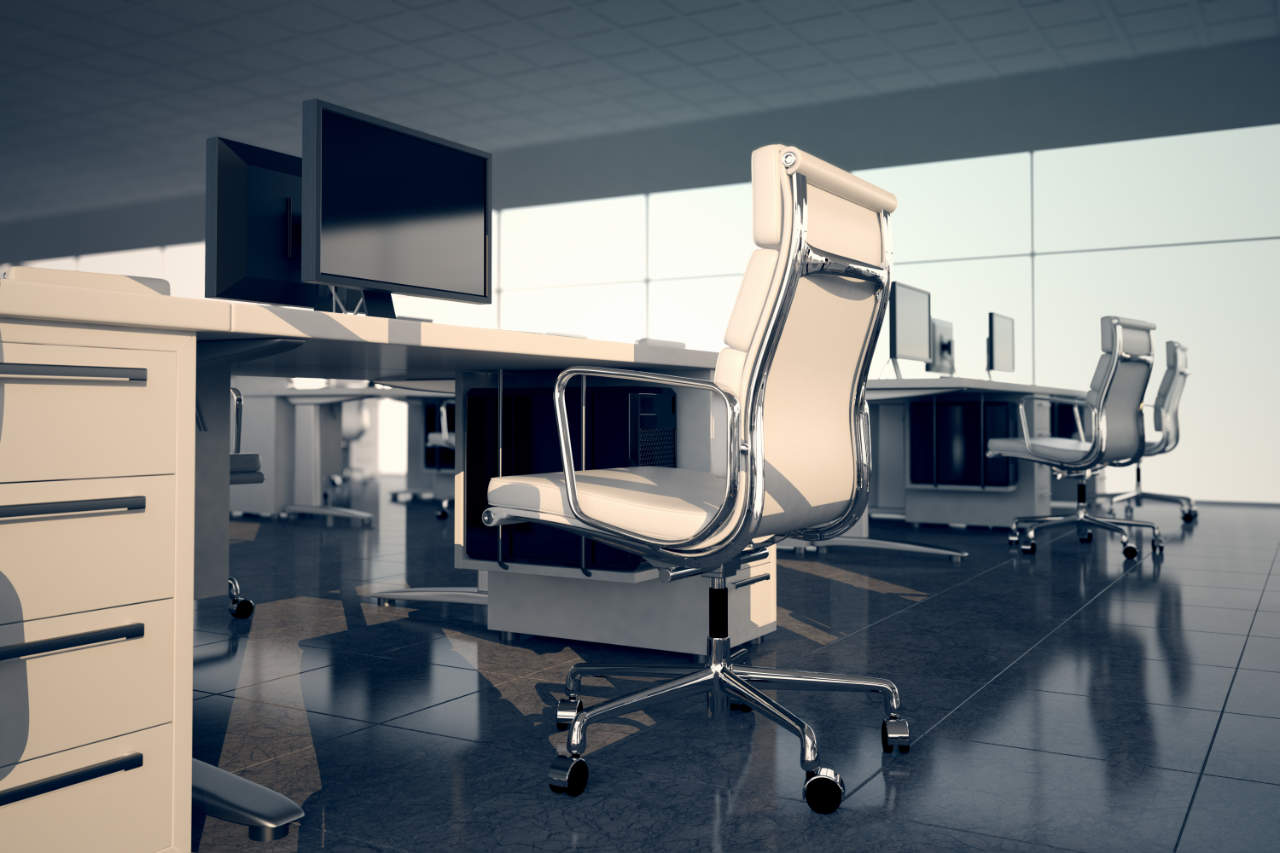
The Display Screen Equipment Regulations 1992 are essential to protect the health and safety of workers who use display screen equipment (DSE) and to safeguard organisations and ultimately the UK economy.
You can listen to an audio version of this blog here:
In 2022/23 almost half a million workers suffered musculoskeletal disorders and 6.6 million working days were lost due to MSDs, which is the second highest cause of absence at work after mental health conditions. MSDs cost UK employers billions of pounds every year.
Studies have exposed a clear correlation between musculoskeletal disorders (MSDs) and poor ergonomics, inappropriate furniture, insufficient rest breaks, and sustained awkward postures. The IES discovered that there was a significant increase in musculoskeletal disorders at the beginning of lockdown when people began to work from home.
In this guide we discuss what the Display Screen Equipment Regulations 1992 mean for employers.

What is display screen equipment (DSE)?
Display Screen Equipment (DSE) describes any device or equipment with a display screen, typically office-based computer screens, laptops, and workplace mobile devices.
For more, please read our guide, What is DSE and how to work safely with display screen equipment.
What are the health risks of DSE?
Incorrect use of DSE and inadequately designed work environments increases the risk of physical and mental health conditions such as:
- Musculoskeletal disorders.
- Repetitive strain injuries (RSI) such as carpal tunnel syndrome or tenosynovitis.
- Mental health-related stress, including depression and anxiety.
- Headaches.
- Eye discomfort.
- Fatigue.
Risks to health can be caused by inefficient workstations such as incorrect seating set-up, insufficient space, poorly set up workspace, lack of awareness on the proper operation of DSE, or lack of regular breaks from equipment.
Those at risk are not only permanent employees but also temporary, part-time and volunteer employees, contractors and anyone carrying out tasks using DSE.
Why are the Display Screen Equipment Regulations (1992) important?
The Display Screen Equipment Regulations 1992 help ensure employers fulfil their legal and moral duties to support employees to work in safe environments.
Protecting the health and safety of those who regularly use DSE can also bring business benefits to organisations.
Benefits may include:
- Cost savings. Preventing workplace injuries and health problems associated with DSE use can result in significant cost savings for businesses. This includes reduced healthcare costs, compensation claims, legal fines and costs associated with hiring and training replacement staff.
- Improved productivity. Healthy and comfortable employees are more likely to stay focused and productive throughout the day. By reducing discomfort and preventing health issues related to DSE use, organisations can maintain higher levels of productivity.
- Reduced absenteeism. Proper ergonomics and health measures for DSE users can help prevent musculoskeletal disorders, eye strain, and other health problems. This can result in fewer sick days and reduced absenteeism, which means less disruption to workflow and lower costs related to temporary staff or overtime.
- Enhanced employee satisfaction. Employees who feel that their health and wellbeing are prioritised by their employer tend to be more satisfied and engaged in their work. High job satisfaction can lead to reduced turnover rates and recruitment costs.
- Higher quality work. Employees who are comfortable and not experiencing discomfort or fatigue are more likely to produce higher-quality work. This can lead to increased customer satisfaction, repeat business, and a stronger competitive position in the market.
- Enhanced reputation. A commitment to worker health and safety, including DSE-related measures, can enhance an organisation’s reputation as a responsible and caring employer. This positive image can attract top talent and strengthen relationships with customers and partners.
- Reduced employee turnover. Employees who develop health problems due to inadequate DSE setups may seek employment elsewhere. By ensuring a healthy working environment, organisations can reduce turnover rates and the associated recruitment and training costs.
- Legal protection. Ensuring that DSE workstations meet health and safety requirements provides legal protection for employers in case of disputes or claims related to workplace injuries or health issues.
- Long-term sustainability. Prioritising worker health in DSE usage contributes to long-term sustainability by reducing the environmental impact associated with employee turnover, healthcare waste, and absenteeism.
Who do the regulations apply to?
The Health and Safety (Display Screen Equipment) Regulations 1992 apply to all workers who use DSE for continuous or extended periods.
The regulations apply to workers dependent on DSE devices to work, whether they are based in the office, working from home, remote working, or working offsite using tablets to carry out work tasks.
The regulations also apply to workers who rely on mobile phones for their work.
What happens if employers breach legislation?
Failing to follow legislation may lead to DSE-related injuries such as MSDs with all the consequences that brings for both employees and employers.
If employees work in prolonged discomfort, this can decrease morale and result in employees becoming less productive. In some circumstances, failure to comply with the regulations could result in an improvement notice being issued and civil claims from employees.

What are an employer’s responsibilities under the regulations?
The Display Screen Equipment Regulations 1992 detail how employers are responsible for their employees’ health, safety and wellbeing when working with DSE.
Employers are required to undertake DSE risk assessments to ensure safe working conditions for their teams and comply with legislation. Mandatory requirements for employers include:
- Assessing workplace health risks.
- Managing workloads and the work environment.
- Supporting with assistive technologies where feasible or assessed as required.
- Covering the costs of eye tests for employees using DSE equipment.
- Maintaining up-to-date training.
Undertaking a DSE workstation assessment
A workstation assessment involves making sure ergonomic furniture, such as chairs and desks, are suitably adjusted for the correct posture when working with screens, optimising desk space, and ensuring sufficient legroom.
Additional requirements may be provided such as a footrest and support cushions to address issues identified in a DSE assessment.
It is essential that the height of screens is considered, and any necessary adjustments are made to avoid reflections and glares. Employers must keep all equipment and devices clean and ensure employees and DSE users report any defects or issues to their manager.
In general, DSE assessments must be conducted by someone competent whenever significant changes are made to the equipment, work environment or the nature of the work. For example, a DSE assessment is required if an employee switches roles and is required to carry out more tasks using DSE than previously or moves location or commences agile working.
At Praxis42, we offer an online DSE self-assessment tool so employees can assess their own workstations. For those who would benefit from tailored advice from our ergonomic specialists, we provide a Virtual Ergonomic Assessment service.
Ensuring employees take regular breaks from the screen
Employers must plan work so that employees can take regular breaks or carry out an activity away from their workstation. Studies have shown that taking short and frequent breaks, five minutes every hour or so, have a much better effect on productivity and employee morale than taking longer intervals after a few hours.
Employers can install break-monitoring software to encourage workers to take breaks from their screens and motivate them to stand, walk or stretch, which may help reduce musculoskeletal problems.
Paying for eye tests
Workers using DSE may be susceptible to visual fatigue and eye discomfort.
Employers must provide employees who use DSE with eye tests from a qualified optician and must cover the cost if requested.
Employers must inform employees of the arrangements they have in place for DSE eyesight tests and the provision of spectacles if prescribed. This topic is covered in DSE training for employees (see below).
Providing display screen equipment training
Under the Display Screen Equipment Regulations 1992 employers must ensure their employees understand how to keep themselves safe when working with DSE.
Our IOSH-approved Display Screen Equipment training covers everything an employee needs to know, from when to use a footrest to how to set up their home workstation and ensure the screen is in the right position.
The course has been designed by chartered health and safety consultants and ergonomists to provide essential training that complies with the Health and Safety Display Screen Equipment Regulations 1992, guidance and schedule.
Online DSE Assessment Tool
Our Online DSE Assessment Tool makes it easy and convenient for employees to self-evaluate their workstation. The assessment takes around 15 minutes to complete and supports compliance with the Display Screen Equipment Regulations (1992).
Find out more from our website or contact us on 0203 011 4242/info@praxis42.com

Adam Clarke
Managing Director (Consulting)
